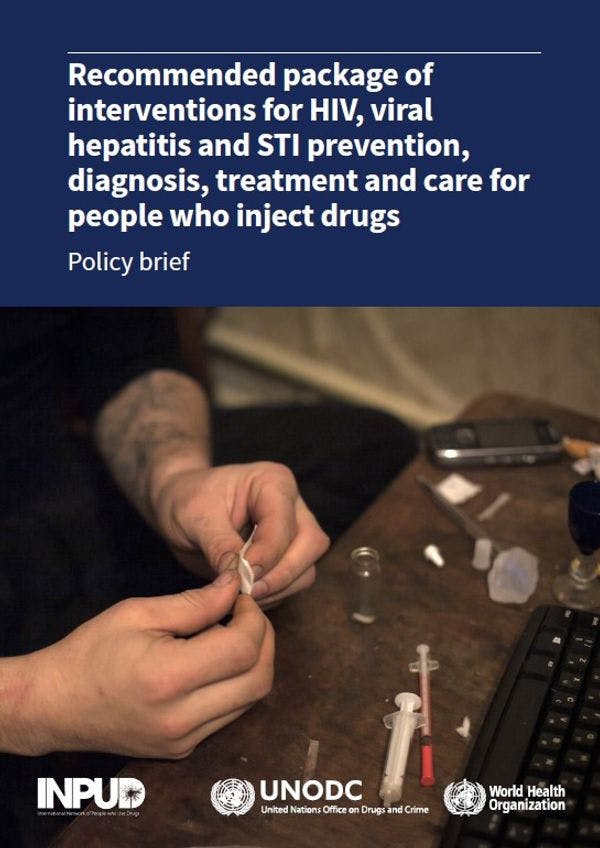Recommended package of interventions for HIV, viral hepatitis and STI prevention, diagnosis, treatment and care for people who inject drugs
In 2022, the World Health Organization (WHO) published the Consolidated guidelines on HIV, viral hepatitis and STI prevention, diagnosis, treatment and care for key populations. These guidelines outline a public health response to HIV, viral hepatitis and sexually transmitted infections (STIs) for five key populations (men who have sex with men, sex workers, people in prisons and other closed settings, people who inject drugs and trans and gender diverse people).
In this policy brief, we give an update on those parts of the guidelines which are relevant for people who inject drugs.
In many countries drug use or possession is criminalized, and in almost every country it is considered immoral, and significant stigma and discrimination is experienced by people who use drugs. At the time of writing, there is extremely low coverage of the evidence-based package of needle and syringe programmes (NSPs) and opioid agonist maintenance therapy (OAMT). In 2021, of 105 countries that report injecting drug use, NSPs were available in 94, and OAMT available in 90 countries. There are regional differences, with low availability of both interventions in both Africa and the Middle East. Also, in most countries that provide these services, their coverage is too low to have an impact.
As a direct result, people who inject drugs are disproportionately affected by HIV and viral hepatitis. The World Drug Report 2022 estimated in 2021 that 11.2 million people injected drugs, 5.5 million of them were living with hepatitis C, 1.4 million were living with HIV and 1.2 million were living with both hepatitis C and HIV. The Joint United Nations Programme on HIV/AIDS (UNAIDS) estimated in 2021 that people who injected drugs had a 35 times greater risk of acquiring HIV than people who did not inject drugs, and WHO estimates that 23% of new hepatitis C infections globally are attributable to injecting drugs.
For impact on HIV and viral hepatitis, structural barriers for people who inject drugs need to be addressed, including decriminalizing drug use and possession for personal use, ending forced detention in compulsory drug treatment centres, addressing violence, stigma and discrimination and empowering communities of people who use drugs. People who use drugs face additional barriers to accessing health services where cessation of drug use is a condition for eligibility. Women who inject drugs may be more stigmatized than their male counterparts, and many work as sex workers to pay for both their and their partnerʼs drugs. Fear of losing custody of their children may make mothers who inject drugs less likely to access reproductive and other health services. They may experience more police harassment and violence than men who inject drugs. The impact of these barriers on HIV and viral hepatitis acquisition is clear, and for this reason the enabling interventions listed in the table below are considered essential for impact for people who inject drugs.
